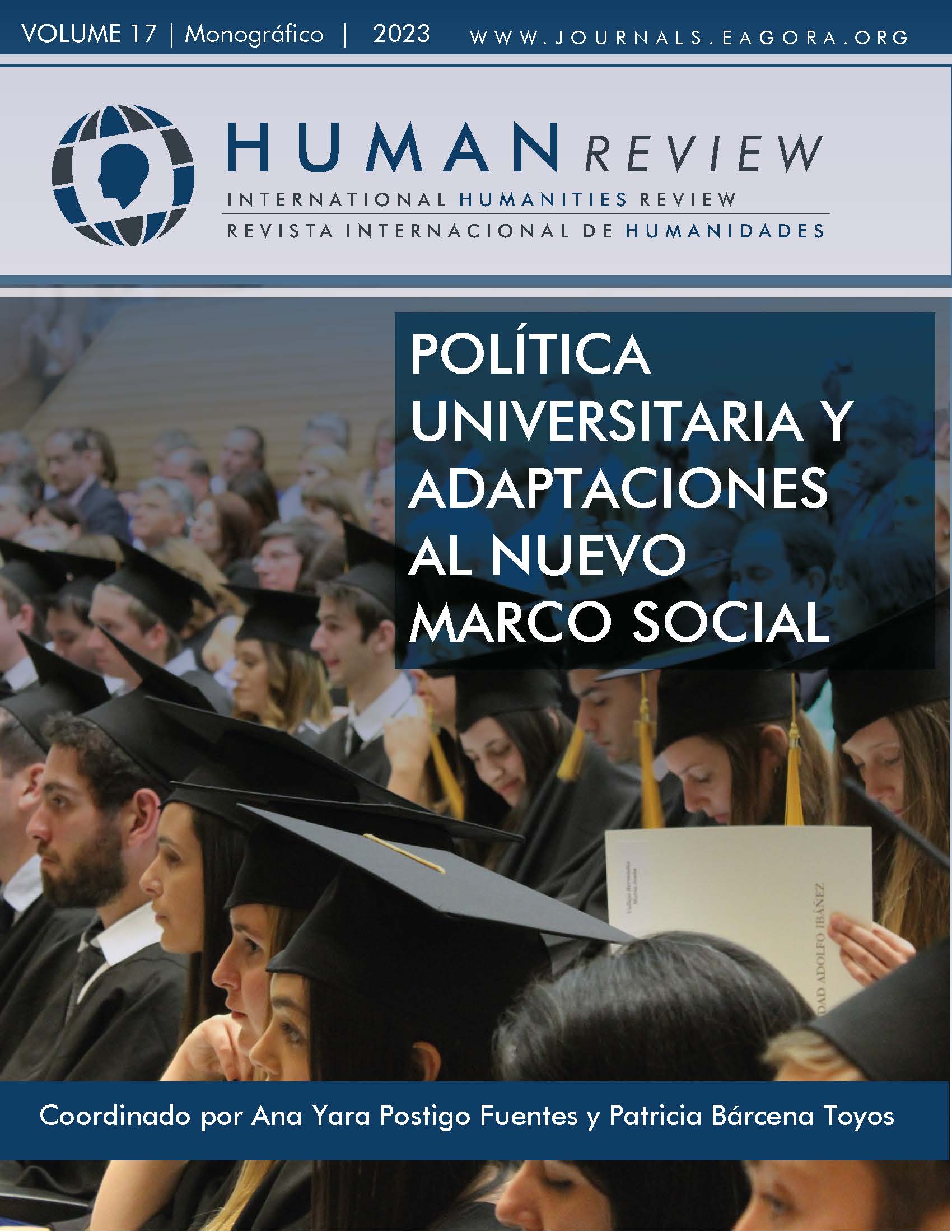Dunbar’s number in the design of the schools of future: A case study
DOI:
https://doi.org/10.37467/revhuman.v12.4722Keywords:
School, Education, Social Sustainability, Dunbar’s Number, Wellbeing at School, Individualized attentionAbstract
Robin Dunbar found a range that was useful to quantify the number of individuals that could be part of a community whose members could know the rest of the community and keep relevant relationships with these other members.
This study shows the evolution of a school from 3 to 18 years old that applied the Dunbar’s Number in its design and reviews the changes in the number of students, the perceived opportunities and advantages of applying this number in Education, besides of the evolution of the usage of this number in the school.
References
Allen, C. (2004, 10 marzo). The Dunbar Number as a Limit to Group Sizes. http://www.lifewithalacrity.com/2004/03/the_dunbar_numb.html
Proctor, R. (2006, 13 enero). AISD Gets the Ball Rolling on High School Redesign. The Austinng Chronicle.
https://www.austinchronicle.com/news/2006-01-13/323620/
Brauer, J. (2021, 14 julio). Dunbar’s Number and its Impact on Positive Relationships Between Teachers and Students. James Brauer. https://jamesbrauer.com/dunbars-number-positive-relationships/
Castillo, G. J. A. del. (2020, 15 julio). Social networks as tools for the prevention and promotion of health among youth - Psicologia: Reflexão e Crítica. SpringerOpen. https://prc.springeropen.com/articles/10.1186/s41155-020-00150-z
Conoce Nuestro Equipo. (2022, 13 octubre). Dragon American School. https://www.dragonamericanschool.com/equipo/
Craig, J. (2012, 12 septiembre). About Dunbar’s Number and Quality Education. Josh Craig Writes. https://joshcraigwrites.wordpress.com/2012/09/12/about-dunbars-number-and-quality-education/
Dunbar, R. I. M. (1992). Neocortex size as a constraint on group size in primates. Journal of Human Evolution, 22(6), 469-493. https://doi.org/10.1016/0047-2484(92)90081-J. DOI: https://doi.org/10.1016/0047-2484(92)90081-J
Dunbar, R. (1993). Coevolution of neocortical size, group size and language in humans. Behavioral and Brain Sciences, 16(4), 681-694. doi:10.1017/S0140525X00032325 DOI: https://doi.org/10.1017/S0140525X00032325
Slate, J. R. & Jones, C. H. (2005). Effects of School Size: A Review of the Literature with Recommendations. Essays in Education, 13(1), 12.
El Gobierno y las CCAA acuerdan volver a las ratios de antes del Covid: 25 alumnos por aula en Primaria, 30 en la ESO y 35 en Bachillerato. (2021, 19 mayo). ELMUNDO. Recuperado 15 de octubre de 2022, de https://www.elmundo.es/espana/2021/05/19/60a4fe7a21efa02e4f8b462d.html
Gonçalves, Bruno & Perra, Nicola & Vespignani, Alessandro. (2011). Modeling Users’ Activity on Twitter Networks: Validation of Dunbar’s Number. PloS one. 6. e22656. 10.1371/journal.pone.0022656. DOI: https://doi.org/10.1371/journal.pone.0022656
González García, S. (2021). Revisión del proceso de adaptación escolar en secundaria desde el enfoque de la escuela democrática. En Actas PhDay Educación 2021 y VII Jornadas de Investigación (1.a ed., pp. 135-140). Facultad de Educación-Centro de Formación del Profesorado. Universidad Complutense de Madrid. https://eprints.ucm.es/id/eprint/73572/
González García, S., Martínez Martín, I. & Solbes Canales, I. (2021). Redefinición de los procesos de admisión, adaptación y ajuste en la educación secundaria desde un enfoque crítico y participativo. En Entornos virtuales para la educación en tiempos de pandemia: perspectivas metodológicas. (1.a ed., pp. 2415-2426). Dykinson.
Lindenfors, P., Wartel, A. & Lind, J. (2021). ‘Dunbar’s number’ deconstructed. Biology Letters, 17(5). https://doi.org/10.1098/rsbl.2021.0158 DOI: https://doi.org/10.1098/rsbl.2021.0158
Londoño Palacio, O. L., Maldonado Palacios, L. F. & Calderón Villafáñez, L. C. (2014). Guía para construir estados del arte. International Corporation of Networks of Knowledge.
Nair, P. (2014). Proyectar el Futuro : Cómo Rediseñar Los Edificios Escolares. SM.
Nuestra Historia. (2022, 7 julio). Dragon American School. https://www.dragonamericanschool.com/nuestra-historia/
Real Decreto 132/2010, de 12 de febrero. (2010). En https://www.boe.es/ (N.o 132/2010). Ministerio de Educación. https://www.boe.es/buscar/act.php?id=BOE-A-2010-4132&p=20120421&tn=1
Seo, E. (2020, 22 julio). Dunbar’s Number and It’s Impact On Effective Teaching. Edsys. https://www.edsys.in/dunbars-number-on-effective-teaching/
Summerhill - an Overview. (2016). A.S. Neill Summerhill School. https://www.summerhillschool.co.uk/a-brief-overview
Valles Martínez, M. (2010). Entrevistas cualitativas. CIS.
Vázquez, K. (2022, 24 septiembre). ¿Cuántos amigos podemos tener a la vez? ¿Cuántos perdemos a lo largo de los años? Estos son los números de la amistad. El País. https://elpais.com/salud-y-bienestar/2022-09-24/cuantos-amigos-podemos-tener-a-la-vez-cuantos-perdemos-a-lo-largo-de-los-anos-estos-son-los-numeros-de-la-amistad.html
Downloads
Published
How to Cite
Issue
Section
License
Those authors who publish in this journal accept the following terms:
- Authors will keep the moral right of the work and they will transfer the commercial rights.
- After 1 year from publication, the work shall thereafter be open access online on our website, but will retain copyright.
- In the event that the authors wish to assign an Creative Commons (CC) license, they may request it by writing to publishing@eagora.org









